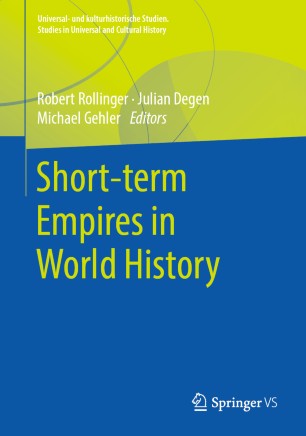Rollinger,Robert, Julian Degen & Michael Gehler (eds.). 2020. Short-term empires in world history. Wiesbaden: Springer.

The volume will focus on a comparative level on a specific group of states that are commonly labelled as “empires” and that we encounter through all historical periods. Although they are very successful at the very beginning, like most empires are, this success is very ephemeral and transient. The era of conquest is never followed by a period of consolidation. Collapse and/or reduction to much smaller dimension run as fast as the process of wide-ranging conquest and expansion. The volume singles out a series of such “short-term empires” and aims to provide a methodologically clearly structured as well as a uniform and consistent approach by developing a general set of questions that guarantee the possibility to compare and distinguish. This way it intends to examine not only already well established empires but also to illuminate forgotten ones.







